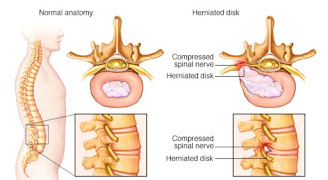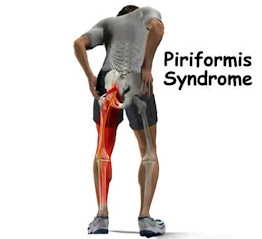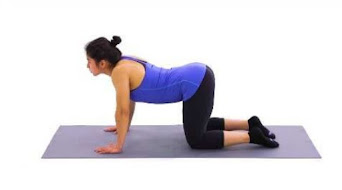Introduction
Sciatica nerve is formed by the combination of 5 nerves in the lumbar and sacral spine L4,L5,S1,S2 &S3.Sciatica nerve begins at your spinal cord and follows a long path through the buttock,down the back of the thigh and leg, it finally ends in the foot.It is the longest nerve and one of the most important ones.It is the reason you can control and feel your legs.when the nerve is irritated you will experience sciatica.
Sciatica
Sciatica refers to the pain that radiates along the path of the sciatica nerve.Usually,it affects only one side of your body.sciatica most commonly occurs when a herniated disc,bone spur or spine or narrowing of the spine ( spinal stenosis) compresses part of the nerve.This causes inflammation pain and often some numbness in the affected leg.
Symptoms
How will you know its sciatica?
When the pain radiates from your lower lumbar spine to your buttock and down to the back of your leg it is sciatica.
You might feel uncomfortable almost anywhere along the path traversed by sciatic nerve.
But it likely follows the path from your low back to your buttock and the back of your thigh and calf.
Now let's talk about pain
The pain can vary widely,from mild to a sharp, burning sensation or encruciating pain.Sometimes it can feel like a jolt or an electric shock.
You can even feel the pain when you cough or sneeze,and prolonged sitting can make the pain more worse.Usually only one side of your body is affected.
Some people may also experience numbness, tingling sensation or muscle weakness in the affected leg or foot.
You might experience pain in one part of your leg and numbness in another part.
Causes
Sciatica can be caused by different factor and that involves your spine in it and it can affect the nerves that run along your back.
It can also be caused by an injury for example from falling,spinal or sciatica nerve tumors or damaged by a disease such as diabetes.
Some of the common conditions that causes sciatica
Herniated Disc
The rubbery disks that lies between the vertebrae in your spine consists of a soft centre ( nucleus) surrounded by a tougher exterior ( annulus). Herniated disc occurs when a portion of the nucleus pushes through crack in the annulus and compresses a nerve.
Spinal Stenosis
It is also called lumbar spinal stenosis.It is characterized by the abnormal narrowing of your lower spinal canal.This narrowing put pressure on your spinal cord and your sciatica nerve roots.
Spondylolisthesis
It is one of the associated condition of degeneration disk disorder.It happens when one spinal bone or vertebrae extends forward over another,the extended spinal bone reaches the tendency to pinch nerves that make up you to sciatic nerve.
Piriformis Syndrome
It is a rare neuromuscular disorder.Where your piriformis muscle involuntarily contracts or tightens, causing sciatica.Your piriformis muscle is the muscle which connects the lower part of your spine to your thigh bones.
When it tightens it can put pressure on your sciatic nerve leading to sciatica.
It can worsen if you sit for a prolonged period of time, fall or experience a car crash.
Exercises for sciatica
Pelvic Tilt
This exercise for sciatica helps in reducing the pain caused by degenerative disc.
Aim: This exercise strengthens the lower abdominal muscles and stretch the low back.
Procedure :
- Lie on your back.
- Exhale and tighten your abdominal muscle as you push your belly towards the floor and flatten your low back.
- Hold the position for 5 seconds.
- Repeat 10 times holding the position for 5 seconds each time.
- Lie on your back.
- start with either your left or right knee and use your hands to gently pull the bent knee towards your chest.
- Hold for 10 seconds.
- Repeat the same movement with the opposite knee.
- Perform the movement 3 to 5 times holding the position for 10 seconds each time.
- Now,next use your hand to gently pull both knee towards your chest.
- Hold for 10 seconds.
- Repeat the movement with both knees 3 to 5 times holding the position for 10 seconds each time.
- Lie on your back.
- Knee should be bent upright and both feet flat on the floor(Hook lying position).
- Holding both knee's in hook lying position together rotate your knees to one side and hold for 3 to 5 seconds,you will feel a gentle stretch on the opposite side of your lower back and hip area.
- Next contract your abdominal muscles and rotate both knees to the opposite sides and hold for 3 to 5 seconds.
- Repeat it for 10 times on each side.
- Begin by positioning yourself on all four.
- Contract your abdominal muscles to help keep your back flat and straight.
- Raise one leg upward behind you and straighten it outward.
- Hold for 3 to 5 secs.
- Repeat the movement on your opposite sides.
- When you can perform this exercise 10 times with tolerable pain, you can add arm movement with each leg extensions.
- Extend the arm (opposite side from the leg) upward and outward in front of your body.
- Hold for 3 to 5 seconds.
- Repeat the same for opposite side.
- Peform this exercise for 10 times.
- Stand straight in a comfortable position.
- Place your hands on your back.
- With your hands on the back push glide your pelvis forward.
- Repeat 10 times.
- Come onto your hands and knees, make sure your hands are under your shoulders.
- Your knees should be under your hips.
- Your back should be in neutral position.
- Sink your back towards the floor and lift your head up at the same time.
- Stick your tail bone out to make a curve with your spine.
- Take a big breath out at the same time.
- Tuck your head and tailbone in, arching through spine as to mimic a camel hump.
- Take a breath in at the same time.
- Exercise often or Regularly
- Maintain Your Posture While Sitting:
- Maintain Your Body Mechanics:

























0 Comments